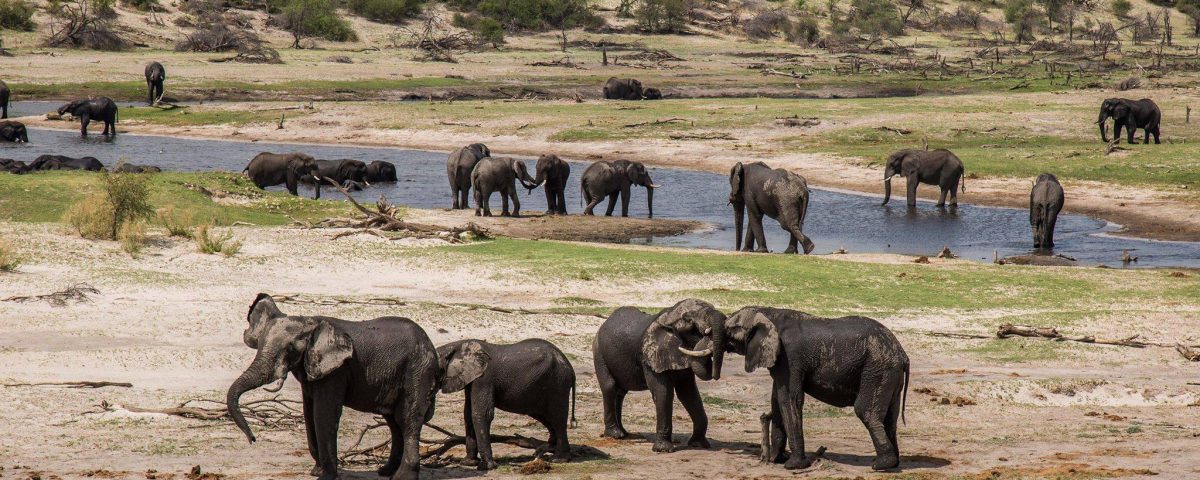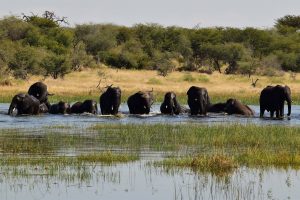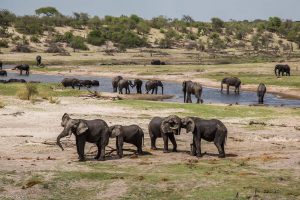
Harmony for Elephants at the Hay Festival – Kate Evans 01 June 2017
June 1, 2017
The Makgadikgadi Pans National Park Burns – Dr Rebecca Dannock 31st August 2017
August 31, 2017Meeting up at the Watering Hole – by Kate Evans 10 August 2017

The more time I spend with elephants the harder it is not to draw parallels with humans, the close knit families of female herds, and the rambunctious young males with their rough and tumble play and picking fights with their peers and as they mature spending more time with other males until they leave their herd and join male society. Since moving to the Makgadikgadi Pans National Park, with its predominantly male population, in 2012 it is what happens after they have left their natal herd that is captivating our team in the field. How does the social life of male elephants work?
The Boteti River is the western border of the park and this draws the male elephants in, water is the
obvious resource but there is much more going on. The males don’t simply come down here to drink and then return to the park to feed or venture into the communal lands opposite, they spend time being social with the other males – playing for hours, greeting and sparring. This is the ideal spot to try and understand more about male elephant society.
I hate to generalise, but in my experience of human adult males, they will happily not be in contact with a mate for years but will drop everything to be there for a birthday celebration, or to meet in the local pub, whilst I might be left wondering ‘well why haven’t you bothered to contact me in 10 years yet you expect me to travel for hours to see you’. When I get the opportunity to spend time on the riverside watching the interactions of all the male elephants, young and old, I cannot help but think that this resource is a social hub for them to reconnect with old friends and make new ones, to see who is still around and may challenge them in the social hierarchy – a function not so dissimilar from a watering hole (pub) for my human male friends…….


